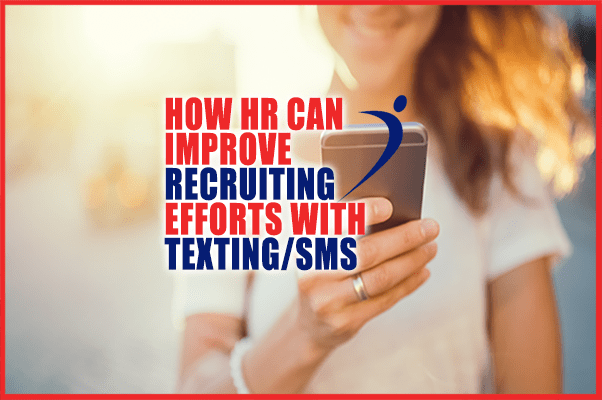
Text messaging can be an easy and effective way to reach out to a wide audience. Recruiting for many jobs can be much easier through text messaging. With smart phone users carrying their mobile devices everywhere, it's easy to grab attention through a text message. For companies to attract the very best, it's vital to reach a large field of candidates. For job recruitment, texting is changing the way our HR departments recruit the most qualified candidates around because:
Efficient Communication is Important in Job Recruitment
Texting is an efficient way to recruit, especially when you are aiming to recruit younger candidates, especially in the Millennial and Gen Z generations. Texting allows for quick, easy communication to occur between a recruiter and a potential recruit. Even if an individual isn't ready for the job right away, a relationship can be cultivated through text messaging. Whether you want to send out a quick link to a potential recruit about new opportunities in the job field or you simply want to make contact, text messaging is the fastest way to do it. While you will still need to use phone calls and emails, texting is a fast way to gather information.
Recruiters Reach a Wider Audience Through Text Messaging
In order to reach candidates more effectively, text messaging provides an easy way to communicate. You can create targeted lists of individuals to receive your messages, creating content that is specific to each group you identify. People read text messages within several minutes, while emails are often ignored. Research shows that text messages have a 98% open rate with a 45% response rate, as compared to emails with a 20% open rate and 6% response rate. People carry cell phones everywhere, especially those looking to find a new job. Since 75% of people would like to have offers sent to them via SMS, so your applicant pool is bound to increase with the usage of text messaging.
Texting Makes the Recruiting Application Process Faster
Applying to any job can be a very long process. With text messaging, it's easy to remind a recruit about any application deadlines. You can send out a reminder about an upcoming interview, or set up a meeting through text messaging. You can also use automated messaging to send out confirmations when an application is complete or you receive a piece of information from your recruit. If you need to gather additional information from an applicant, a quick text message can get you that information fast.
Reach Recruits in Minutes with Text Messaging
Texting is a way to reach candidates within minutes. When you share links to social media posts, or links to provide further information, you are using technology in the way it is designed. Texting is a great tool to reach a large audience, and you are opening yourself up to a wide range of candidates for open positions when you use text messaging platform. You will be able to build an online presence by sharing posts on social media.
Text messaging may not work for every recruit, but it certainly adds value to the entire recruitment process. Text messaging can give you the power to send messages that are going to be read within minutes. You gain a wider base of followers when you set up a text messaging campaign instead of an email one. Texting is fast, efficient, and helps you build relationships. In the age of technology, test messaging helps recruiters better utilize technology to their benefit and access candidates where they’re communicating.
Author Biography:
Ken Rhie
Ken Rhie is the CEO of Trumpia, which earned a reputation as the most complete SMS solution including user-friendly user interface and API for mobile engagement, Smart Targeting, advanced automation, enterprise, and cross-channel features for both mass texting and landline texting use cases. Mr. Rhie holds an MBA degree from Harvard Business School. He has over 30 years of experience in the software, internet, and mobile communications industries.

